Los Angeles is a diverse and vibrant city that is home to a variety of birds. From the iconic hummingbirds of Griffith Park to the bright-colored parrots of Echo Park, the city is alive with the sound of birdsong.
From the majestic bald eagles of the San Gabriel Mountains to the flocks of seagulls that line the beaches of Santa Monica, the variety of species that call Los Angeles home is unparalleled.
From the tiniest of sparrows to the largest of hawks, the birds of Los Angeles provide a beautiful and ever-changing backdrop to the city.
This article will provide an overview of the birds of Los Angeles, detailing their habitats, behaviors, and diets.
1. Black-Necked Stilt
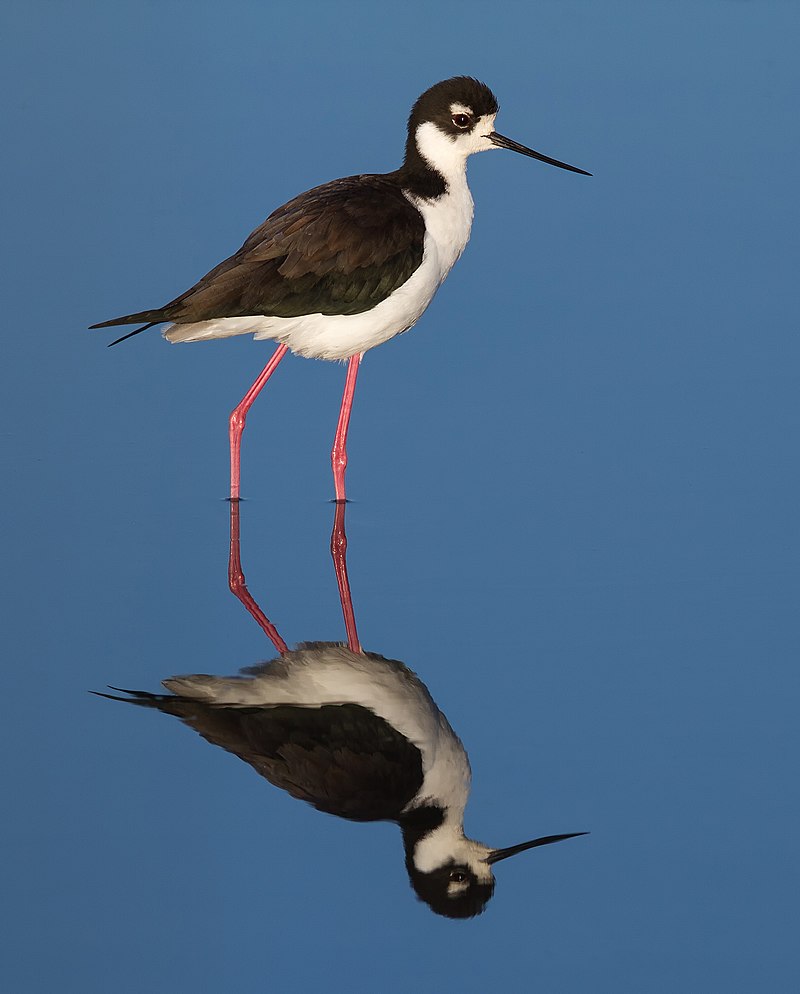
The Black-necked Stilt is an elegant shorebird that can be found from the coastal areas of California to Florida, then south through Central America and Brazil.
It has black upperparts contrasted by long white wings with a glossy sheen. Its striking red eyes are set against its white facial mask while its legs are bright pinkish in coloration.
The Haematopus mexicanus species inhabits marshy wetlands and brackish lagoons where it feeds on insects, crustaceans, small amphibians, and fish which they catch using their slender bill or chase after them as they run across the surface of water or mudflats.
This bird typically nests near shallow waters but will use any habitat type if food resources are available nearby making it a highly adaptable species well suited for human-altered habitats such as rice fields and sewage ponds.
Scientific classification:
| Kingdom | Animalia |
| Phylum | Chordata |
| Class | Aves |
| Order | Charadriiformes |
| Family | Recurvirostridae |
| Genus | Himantopus |
| Species | H. mexicanus |
2. Greater Roadrunner
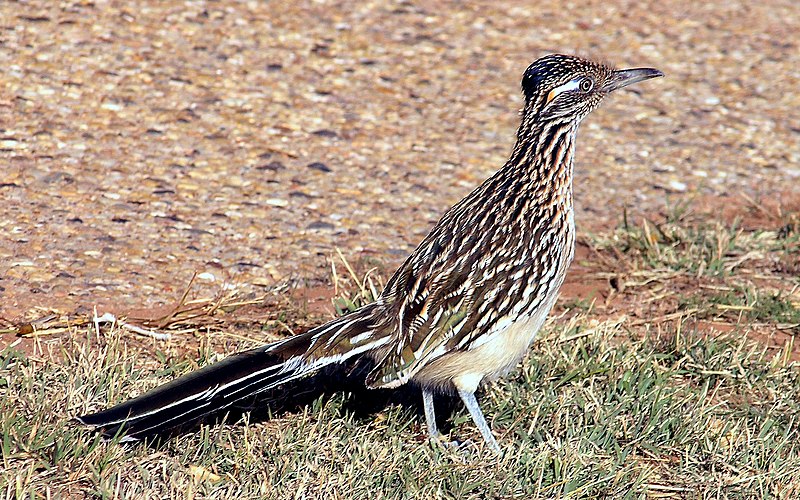
The Greater Roadrunner is a long-legged bird in the Cuculidae family that can be found throughout Aridoamerica. It has many nicknames, including Californian Earth-cuckoo, Chaparral Cock and Snake Killer.
This species is one of two birds belonging to the genus Geococcyx – the other being its smaller counterpart, Lesser Roadrunner.
The Greater Roadrunners are known to eat anything they can catch such as lizards, snakes, and insects, making them very valuable predators for keeping pests at bay.
They also have an impressive burst of speed over short distances which helps with hunting prey or escaping danger quickly.
With their large eyes and distinctive black tips on their tail feathers, these amazing creatures make quite an impression when spotted out in nature.
Scientific classification:
| Kingdom | Animalia |
| Phylum | Chordata |
| Class | Aves |
| Order | Cuculiformes |
| Family | Cuculidae |
| Genus | Geococcyx |
| Species | G. californianus |
3. Acorn Woodpecker
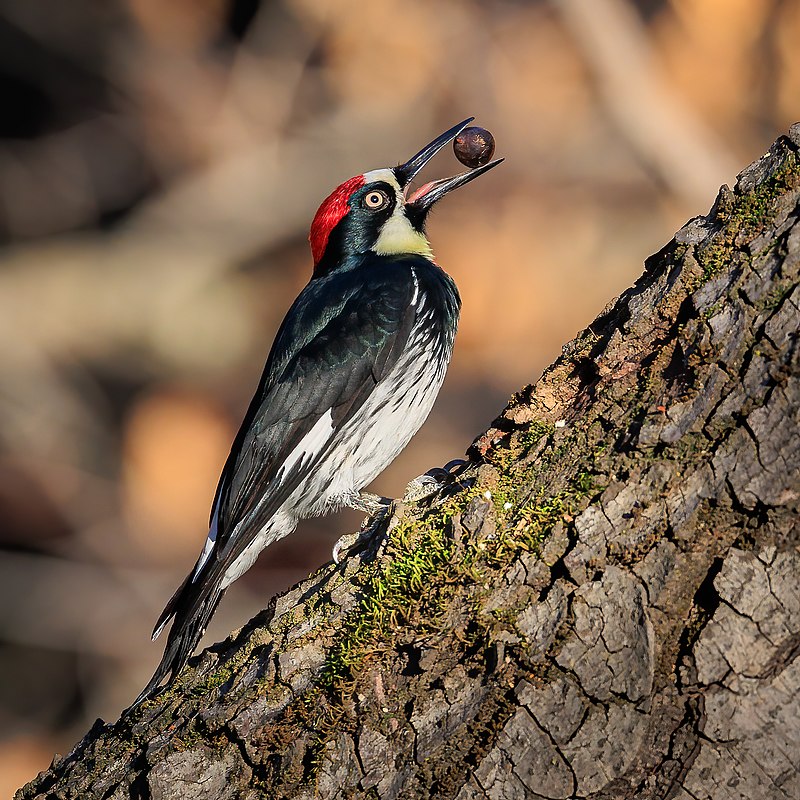
The Acorn woodpecker is a medium-sized bird with an average weight of 85 grams and 8.3 inches in length. It was first described by the English naturalist William John Swainson from a specimen collected in Mexico, back in 1827.
Its scientific name, Melanerpes formicivorus, combines Latin words meaning “ant” and “-vorous”.
This species has distinct black plumage all over its body except for some white patches on its wings and tail feathers which can be seen when flying or perched atop trees.
They are known to store acorns inside tree crevices as well as within bark cracks – often using them during lean times.
The acorn woodpecker is also socially active; they live together with other birds of their kind in groups called ‘granaries’. Their chirps are loud enough that they can easily be heard from afar.
Scientific classification:
| Kingdom | Animalia |
| Phylum | Chordata |
| Class | Aves |
| Order | Piciformes |
| Family | Picidae |
| Genus | Melanerpes |
| Species | M. formicivorus |
4. Red-Crowned Amazon
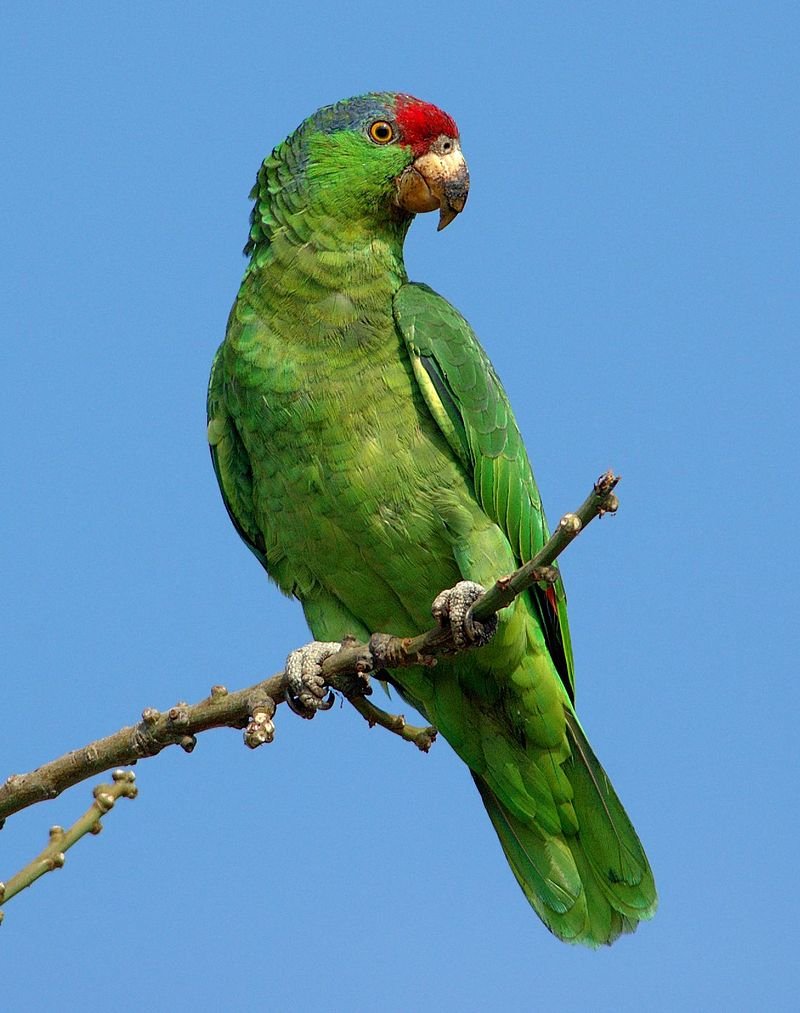
The Red-crowned Amazon is an endangered bird native to northeastern Mexico and possibly southern Texas. This parrot has a distinct red crown, green cheeks, and grayish wings with yellow highlights.
It typically lives in open woodlands near water sources such as rivers or lagoons. The estimated population of the wild stands between 2,000 – 4,300 mature individuals due to habitat destruction and illegal poaching for pet trade purposes.
Conservation efforts are being made by organizations like the IUCN Species Survival Commission Parrots Specialist Group (PSG) which works towards protecting this species from extinction through research projects along its range countries.
Scientific classification:
| Kingdom | Animalia |
| Phylum | Chordata |
| Class | Aves |
| Order | Psittaciformes |
| Family | Psittacidae |
| Genus | Amazona |
| Species | A. viridigenalis |
5. Lewis’s Woodpecker

Lewis’s woodpecker is a large species of North American bird, discovered and named after Meriwether Lewis by the ornithologist Alexander Wilson.
Its body measures 18-23 cm in length, with a wingspan ranging from 25 to 30 cm.
It has dark plumage on its back and head that transitions into lighter brown feathers on its chest, belly, and tail.
The male bird has bright red patches along the sides of his neck as well as at the base of his bill while females have pinkish or yellow tones instead.
This species primarily feeds on insects such as ants which it finds underneath bark or near dead trees where they live their solitary lives except during mating season when pairs form temporary bonds for breeding purposes before going off alone again afterwards.
Scientific classification:
| Kingdom | Animalia |
| Phylum | Chordata |
| Class | Aves |
| Order | Piciformes |
| Family | Picidae |
| Genus | Melanerpes |
| Species | M. lewis |
6. Belted Kingfisher
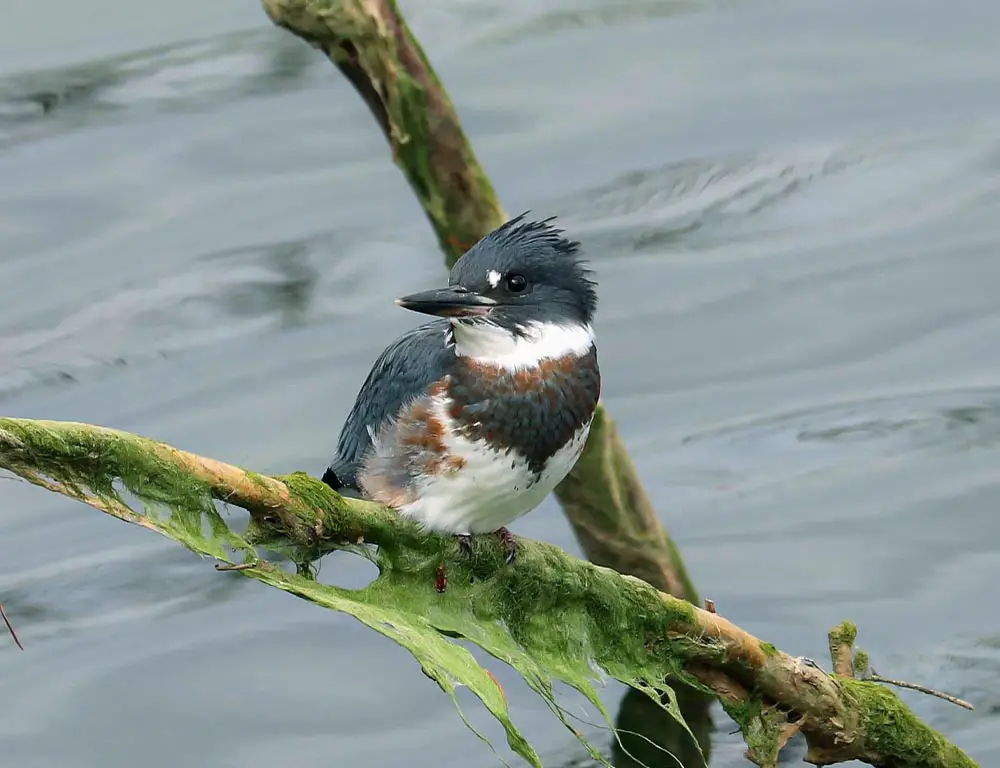
The belted kingfisher is a large, eye-catching bird native to North America. It belongs to the family Alcedinidae and has been divided into three subfamilies by recent research.
The species was first described in 1758 by Carl Linnaeus in his Systema Naturae.
This water Kingfisher stands out for its size as well as its striking plumage; males are bright blue on top with white below and females have rusty brown backs and wings with a thick black breast band across their chest.
They also possess an impressive call that can be heard from quite far away.
Belted kingfishers feed mainly on small fish but will sometimes also eat crustaceans, insects or even amphibians if they come across them while hunting around rivers or streams.
All in all, this is truly one remarkable bird that deserves our admiration.
Scientific classification:
| Kingdom | Animalia |
| Phylum | Chordata |
| Class | Aves |
| Order | Coraciiformes |
| Family | Alcedinidae |
| Subfamily | Cerylinae |
| Genus | Megaceryle |
| Species | M. alcyon |
7. California Quail
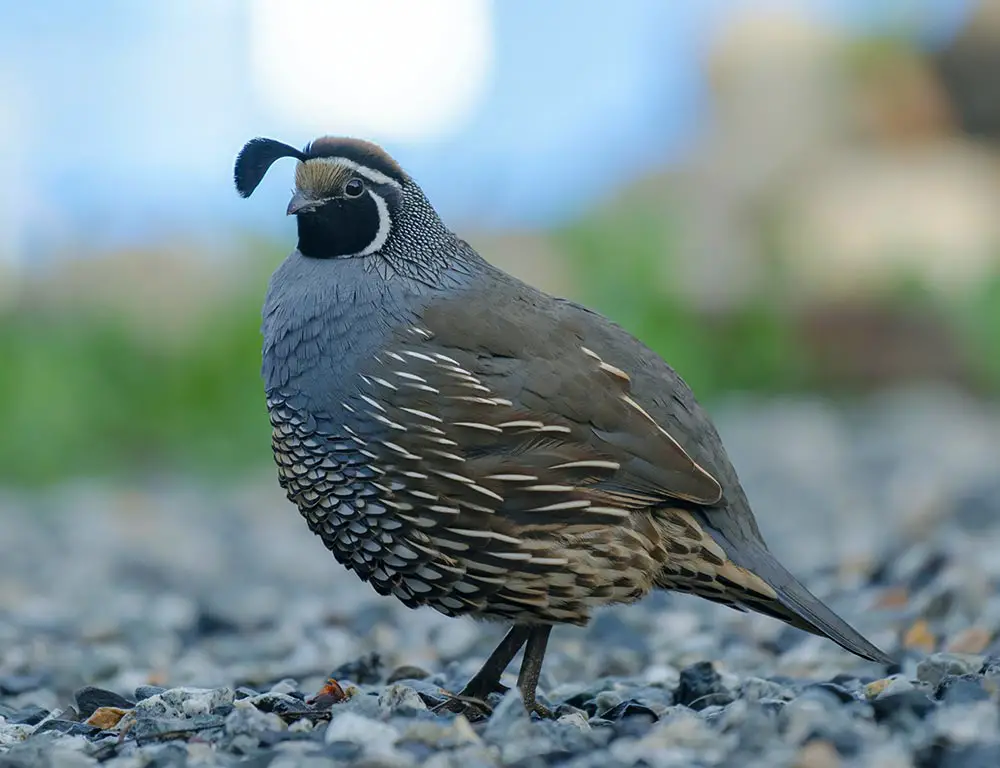
The California quail is a small, ground-dwelling bird with an iconic drooping crest. Male birds have a dark brown cap and black face while females sport a brown back and white streaks on their flanks.
These quails are found in the western United States and parts of northern Mexico and may gather in groups to feed or dust bathe together during the day.
Their diet consists mainly of grasses, seeds, berries as well as some insects like beetles or ants.
The population has been declining due to habitat loss so conservation efforts are being implemented for this species’ survival.
Scientific classification:
| Kingdom | Animalia |
| Phylum | Chordata |
| Class | Aves |
| Order | Galliformes |
| Family | Odontophoridae |
| Genus | Callipepla |
| Species | C. californica |
8. Pied-Billed Grebe
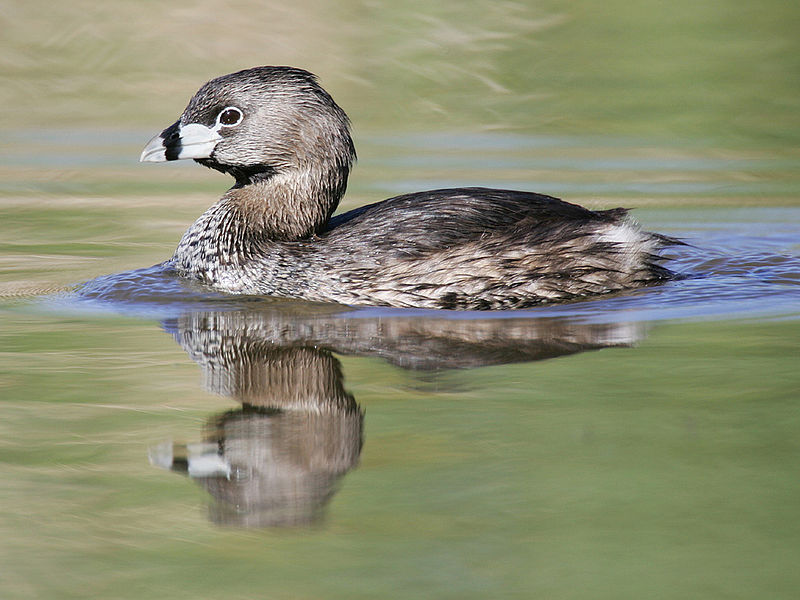
The Pied-billed Grebe is a water bird found in ponds throughout the Americas. It has earned many nicknames, including American dabchick, rail, and Carolina grebe.
This species of grebe can be recognized by its distinctive bill which is pied or mottled with black and white markings.
Its brownish body is also covered in dark spots and well has long legs for swimming underwater to catch food such as aquatic insects and crustaceans.
The Pied-billed Grebes are monogamous birds that pair up during breeding season from spring to summer where they build their nests together on vegetation near the shoreline of lakes or slow-moving rivers.
These birds are solitary outside of mating season but will form small flocks when migrating south for winter months.
Scientific classification:
| Kingdom | Animalia |
| Phylum | Chordata |
| Class | Aves |
| Order | Podicipediformes |
| Family | Podicipedidae |
| Genus | Podilymbus |
| Species | P. podiceps |
9. American Coot
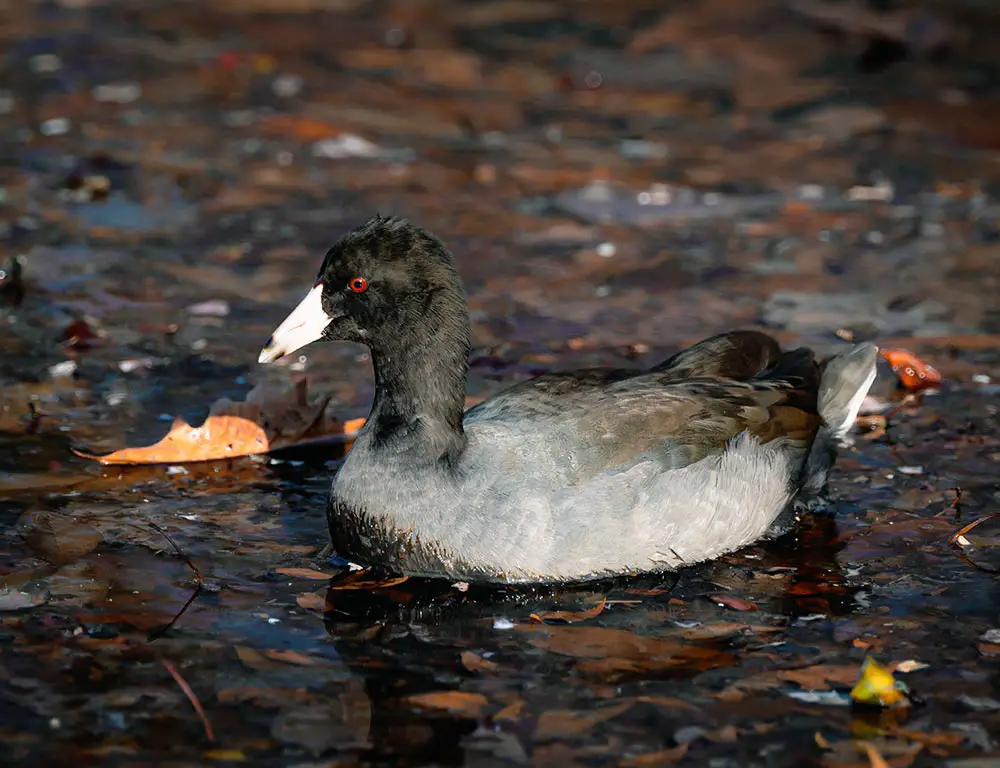
The American coot is a bird of the Rallidae family, commonly mistaken for ducks. However, they are only distantly related and have broad lobed scales on their lower legs and toes that fold back with each step to help them walk on dry land, unlike ducks which have webbed feet.
Coots are omnivores who typically live in freshwater marshes, ponds, and lakes but can also be found in brackish water habitats or even open oceans during migration season.
They feed mainly on algae and aquatic plants as well as small fish, snails, insect larvae, and worms from time to time.
The males display territorial behaviour by chasing away intruders within their territory while females lay eggs mostly.
In floating nests made of vegetation near shorelines or islands among reeds where chicks hatch after about three weeks incubation period before swimming off into adulthood shortly afterward at 10-12 weeks old.
Scientific classification:
| Kingdom | Animalia |
| Phylum | Chordata |
| Class | Aves |
| Order | Gruiformes |
| Family | Rallidae |
| Genus | Fulica |
| Species | F. americana |
10. Red-Throated Loon
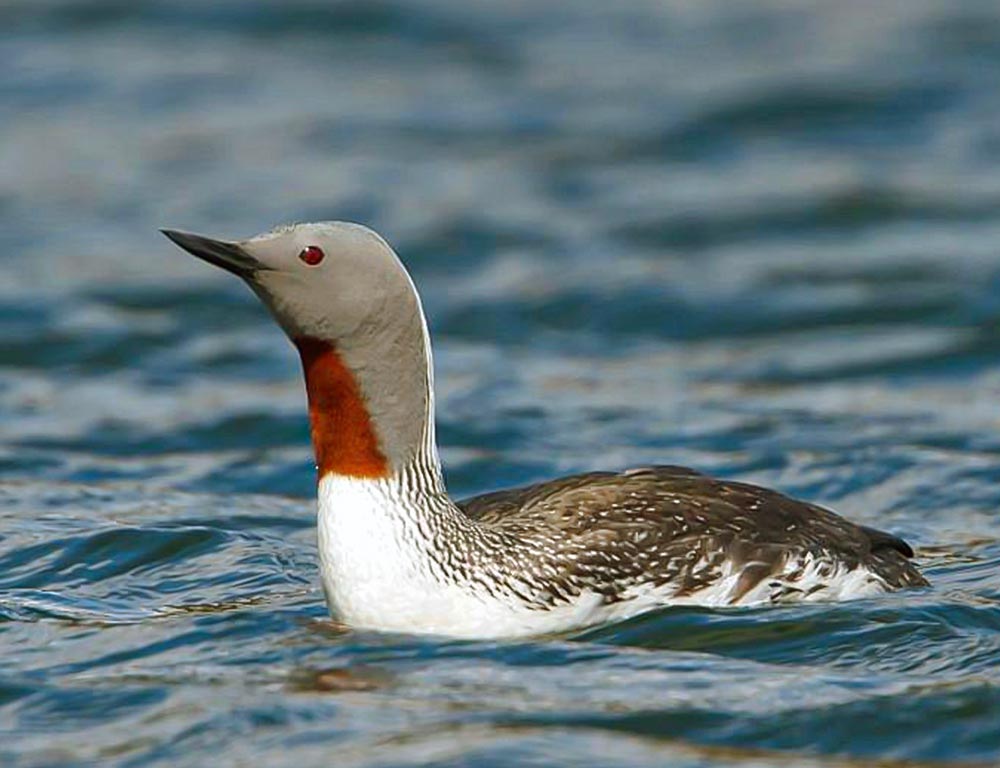
The Red-throated Loon is a migratory bird found in the northern hemisphere, with its breeding grounds primarily located in Arctic regions and wintering spots near coastal waters.
With an average length of 55 – 67 cm (22 – 26 inches), it’s the smallest member of the loon or diver family.
Its namesake comes from its bright red throat patch which contrasts against its white underside and grey back.
This species has adapted to life on icy seas; they are strong swimmers with powerful wings for long flights over open water when migrating seasonally.
Their diet consists mostly of fish but can also include crustaceans, molluscs, amphibians, and insects depending on availability.
Scientific classification:
| Kingdom | Animalia |
| Phylum | Chordata |
| Class | Aves |
| Order | Gaviiformes |
| Family | Gaviidae |
| Genus | Gavia |
| Species | G. stellata |
11. Dunlin
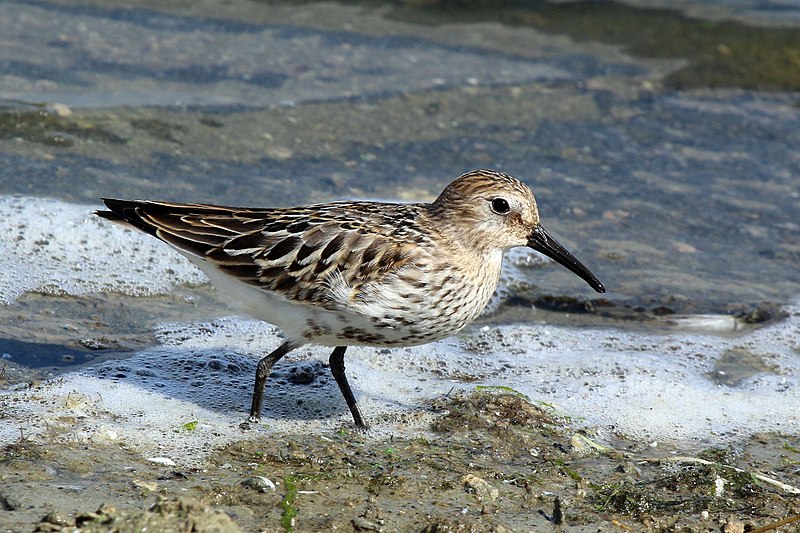
The Dunlin is a small wader, formerly known as part of the stint family. It has dull brown feathers and its name is derived from the dialect word “dunling”.
This bird breeds in Arctic or subarctic regions during summer months, but migrates to warmer climates during winter.
The Dunlin feeds on insects and invertebrates which it finds in mudflats and shallow waters.
During breeding season they form large flocks that can contain thousands of birds. They are also well-known for their impressive synchronized flight patterns that look like a wave moving through the sky.
Scientific classification:
| Kingdom | Animalia |
| Phylum | Chordata |
| Class | Aves |
| Order | Charadriiformes |
| Family | Scolopacidae |
| Genus | Calidris |
| Species | C. alpina |
12. Red-Naped Sapsucker
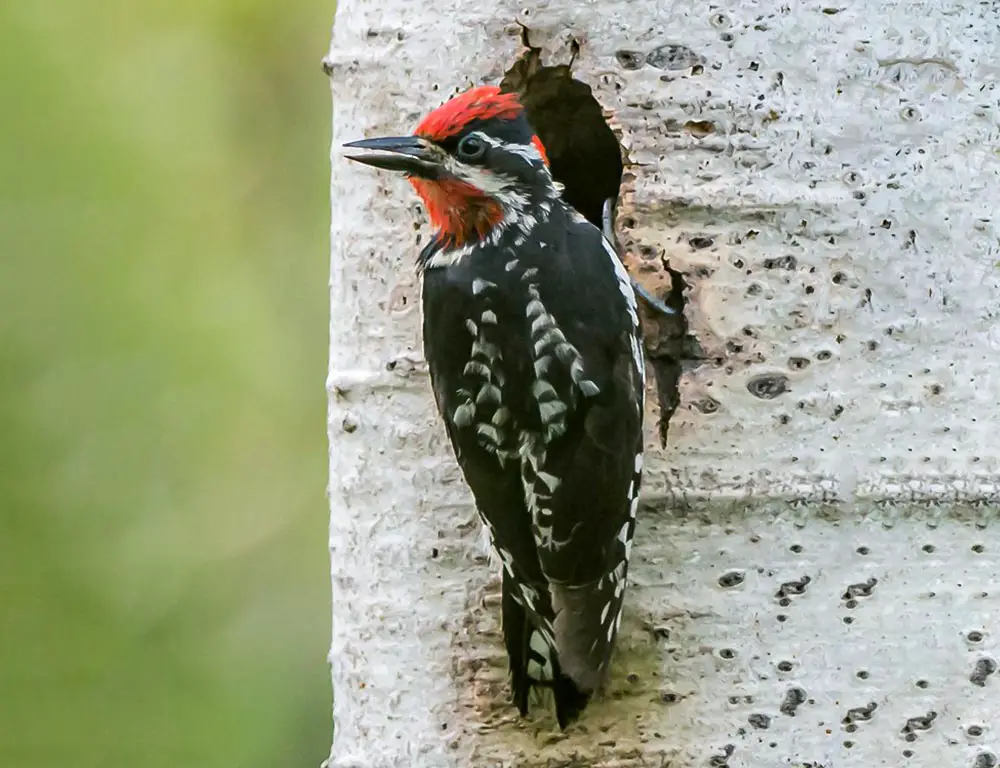
The Red-naped Sapsucker is a medium-sized woodpecker native to North America. It was initially thought to be a subspecies of the yellow-bellied sapsucker, but it has since been identified as its species.
This bird belongs to the genus Sphyrapicus and does not have any known subspecies. Its distinct red head patch makes this species easy to identify among other birds of its kind.
It can usually be found near conifers or deciduous trees that contain sap wells drilled by these birds for their food source – mainly insects and tree sap.
These birds are also known to eat fruits, berries, and nuts during winter months when bug populations decrease significantly.
The Red-naped Sapsucker is an important part of many ecosystems across North America due to their unique diet habits which provide essential nutrients needed for plant growth and health; making them a valuable asset in preserving forests everywhere.
Scientific classification:
| Kingdom | Animalia |
| Phylum | Chordata |
| Class | Aves |
| Order | Piciformes |
| Family | Picidae |
| Genus | Sphyrapicus |
| Species | S. nuchalis |
To Recap
The vibrant city of Los Angeles, often known for its urban hustle and bustle, also harbors a surprising wealth of avian life. This list of “12 Common Los Angeles Birds” provides a glimpse into the diverse bird species that thrive in this bustling metropolis.
From the elegant Western Bluebird to the charismatic Anna’s Hummingbird, these birds remind us that nature can flourish even amidst urban landscapes.
As we appreciate and protect their habitats, we not only enhance the quality of life for these feathered residents but also nurture a deeper connection between city dwellers and the natural world, making Los Angeles a more vibrant and harmonious place to live.